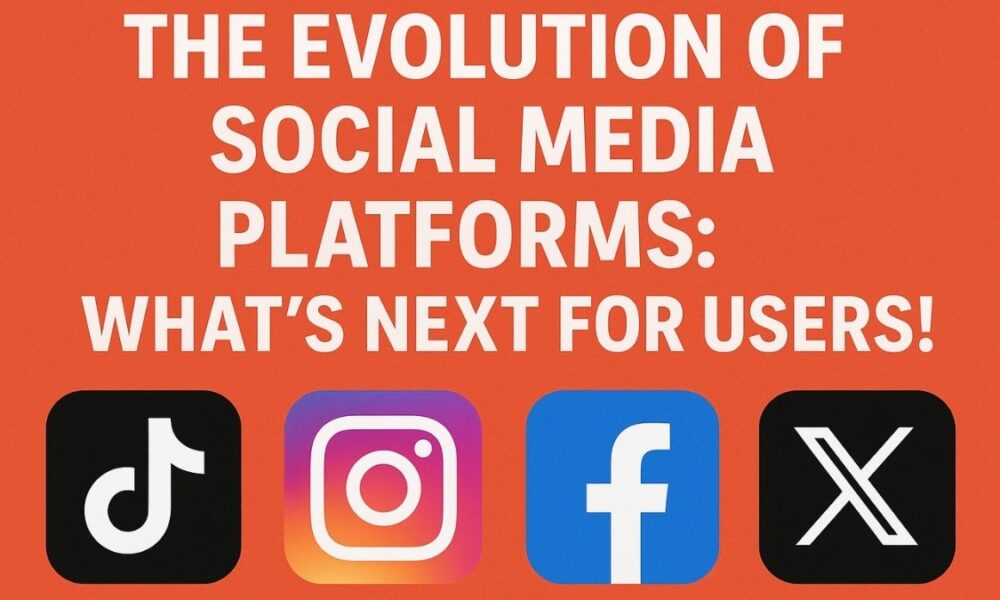Social media trends
The Evolution of Social Media Platforms: What’s Next for Users!

In just two decades, social media has grown from small online networking sites to massive global ecosystems that influence every aspect of our lives. From how we connect with friends and family to how we consume news, shop, and even build careers, social media has become central to daily human interaction.
The journey of social media is a reflection of both technological advancements and changing user behavior. Early platforms like MySpace and Orkut were focused on profiles and basic communication, while today’s TikTok, Instagram, and YouTube Shorts deliver AI-powered, personalized, and highly visual experiences. As the industry continues to evolve, one question stands out: what’s next for users?
Evolution of Social Media Platforms
| Era & Timeline | Key Platforms | Features Introduced | Impact on Users |
|---|---|---|---|
| Early Networking (2000–2006) | Friendster, Orkut, MySpace | Basic profiles, music sharing, online communities | First digital identities were created. Users experienced online networking for the first time, though features were limited. |
| Community & Sharing (2006–2012) | Facebook, Twitter, LinkedIn | News feeds, groups, hashtags, professional networking | Social media became global. Users started sharing updates, connecting with communities, and following real-time conversations. |
| Visual & Mobile Era (2012–2018) | Instagram, Snapchat, Pinterest | Mobile-first design, filters, stories, influencer marketing | Shift from text to visuals. Users adopted real-time image/video sharing, and the influencer economy was born. |
| Short-Form Video Dominance (2018–2024) | TikTok, YouTube Shorts, Instagram Reels | Algorithm-driven feeds, viral short videos, live streaming | Users embraced fast content. Attention spans shortened, algorithms gained power, and global trends spread instantly. |
| AI-Driven & Immersive Future (2025–2030) | Meta Horizon Worlds, Mastodon, Decentralized apps | AR/VR integration, blockchain ownership, AI influencers | Social media will move toward immersive experiences, privacy-first models, and user-controlled digital economies. |
Key Trends Defining the Future
1. Artificial Intelligence and Personalization
AI has already transformed how users engage with social media. Personalized feeds, smart recommendations, and predictive analytics keep users hooked. In the future, AI will not only recommend content but also generate content, creating challenges around authenticity and originality.
2. Immersive AR/VR Experiences
With the rise of the metaverse, social media will move beyond text and video into fully immersive digital worlds. Platforms like Meta Horizon Worlds are early examples where users can interact through avatars in virtual spaces. This will redefine how we socialize, work, and entertain ourselves.
3. Privacy and User Control
Data scandals and rising awareness of digital privacy mean that future platforms must offer greater transparency. Users will demand more control over their data, encrypted communication, and decentralized systems where they own their digital identities.
4. The Growth of the Creator Economy
Social media has given rise to a powerful creator economy. Future platforms will expand monetization opportunities with subscriptions, NFTs, tokenized content, and direct fan engagement. For users, this means more authentic and diverse content created by individuals rather than corporations.
5. Decentralized and Niche Communities
Instead of relying solely on big tech platforms, many users are moving toward niche and decentralized communities like Mastodon and Discord. These spaces allow for interest-based interactions, tighter communities, and less algorithmic interference.
Conclusion
The evolution of social media platforms is a journey from simple networking sites to today’s AI-driven, immersive, and creator-focused ecosystems. Each era has reshaped how people communicate and engage with the world around them.
Looking ahead, users can expect hyper-personalized feeds, immersive digital worlds, stronger privacy protections, and powerful creator-driven economies. While this future promises exciting opportunities, it also brings challenges such as data security, content authenticity, and digital balance.
Ultimately, the next chapter of social media will not just connect people — it will redefine how we live, work, and build communities online.
1. Social Commerce and Shopping Integration
Platforms like Instagram, Facebook, and TikTok are no longer just for content. They are becoming shopping hubs where users can browse, review, and purchase products directly inside apps. This makes social media both an entertainment space and a marketplace.
2. Rise of Audio-Based Communities
With apps like Clubhouse and Twitter Spaces, audio-first interactions gained popularity. Although not as dominant as video, audio platforms appeal to users who want more intimate, real-time discussions. This trend may grow in professional networking and education spaces.
3. AI Influencers and Virtual Identities
Virtual influencers like Lil Miquela have already gained millions of followers. In the future, we may see AI-generated personalities running entire accounts, collaborating with brands, and engaging with users. This will redefine authenticity on social media.
4. Mental Health and Digital Wellbeing
As platforms become more engaging (and sometimes addictive), users are becoming conscious of their digital wellbeing. Features like screen time tracking, content filters, and mindful usage reminders are now part of the experience. Future platforms will likely emphasize healthier online habits.
5. Integration with Work and Education
Social media is also becoming a tool for learning and professional collaboration. LinkedIn Learning, YouTube tutorials, and community-driven groups on Discord show how social platforms are merging with education and career development.
What’s Next for Users?
- Personalized Digital Worlds: Every user will have feeds, communities, and virtual spaces tailored exactly to their interests.
- Control Over Data: Future social platforms will likely give users the ability to manage, monetize, or even sell their own data.
- Immersive Communication: Instead of text and video, AR/VR avatars and holographic calls will create lifelike experiences.
- Global + Local Mix: Users will participate in global conversations while also joining hyper-local, interest-based groups.
- Creator-Led Economy: Creators will have more independence from big platforms, earning directly through fans, NFTs, and decentralized payment models.